
How to propagate mock orange?
Ideal times and techniques to successfully root a mock orange cutting
Contents
Mock-orange (Philadelphus) or poet’s jasmine is easily recognised in the garden, thanks to its sweet scent and elegant white flowers appearing in late spring.
Mock-orange is a bush very easy to multiply by propagation by cuttings of shoots, regardless of variety (hybrid, dwarf, old-fashioned…). You can choose to take a cutting to rejuvenate an ageing bush, to obtain a new variety or simply to multiply an existing mock-orange in several places in your garden: border, flowering hedge, pot, …
Here are our tips for successfully propagating a mock-orange: best times for propagation by cuttings and techniques to follow to easily succeed in multiplying.
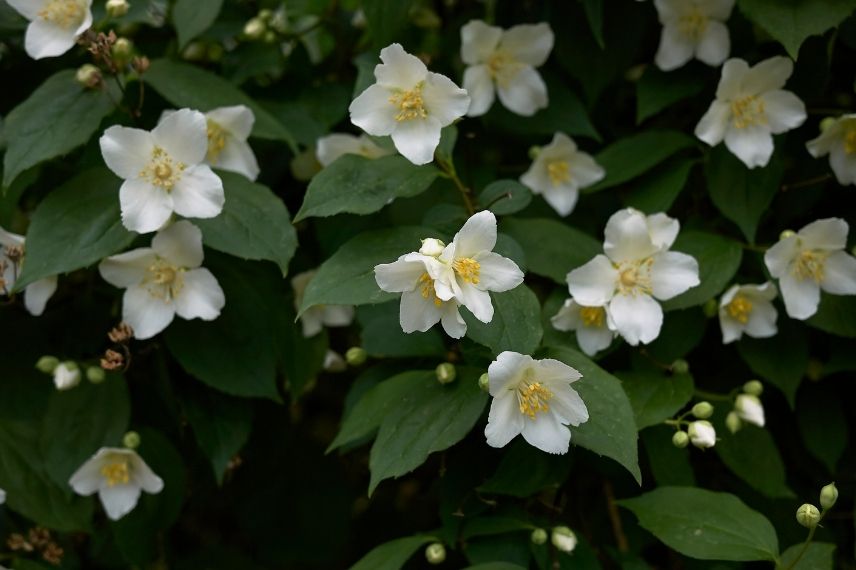
Propagating your favourite mock-oranges is, after all, easy
→ Discover our complete guide on Mock-Orange
When to take a cutting of mock orange?
Taking a cutting allows reproducing a plant by copying the same characteristics as the original meristematic cell ‘mother’ plant. It is the simplest way to multiply mock orange.
Two periods are ideal for taking a cutting of mock orange:
- late summer, in August or September, after flowering
- in winter, between November and February, during dormancy of the bush after leaf fall
Propagation by cuttings is therefore carried out either from new shoots of the year, on herbaceous stems, or from last year’s dry wood shoots. Both techniques work very well.

Propagation by cuttings of mock orange can be carried out after flowering on terminal stems
Read also
15 easy-to-propagate bushesMethods to follow for propagation by cuttings of mock orange
Right equipment for successful cuttings
To carry out propagation by cuttings of mock orange (seringat), necessary equipment consists of :
- pruning shears well-acute, whose blades should first be cleaned with 70°C alcohol or black soap to avoid risk of disease transmission
- a pencil, twig or an Asian-style chopstick
- a free-draining mix for substrate, made from potting soil that promotes rooting or from standard potting soil mixed with sand or perlite (small pieces of sandy volcanic rock with high water retention)
- a cloche, a plastic bottle cut in half or a freezer-type plastic bag for summer propagation; this will help retain humidity and prevent desiccation
- optional: rooting hormones or a root activator to encourage establishment of young plants
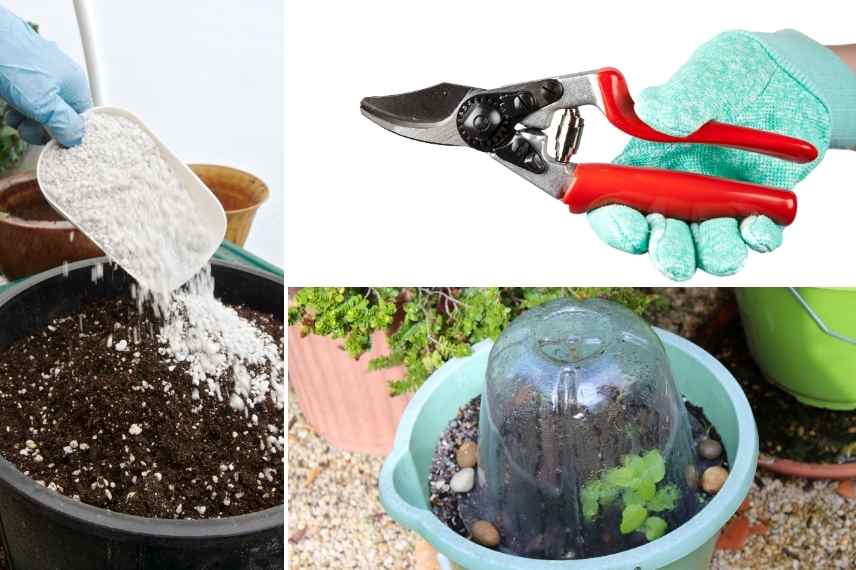
Pruning shear, well-draining substrate (here with perlite) and small cloche or bottle: everything needed to succeed with cuttings!
Propagate mock orange using covered cuttings in summer
Propagation by cuttings under cover is very easy to perform and helps keep substrate for mock orange moist during summer.
- Take from mother plant shoots with at least two nodes
- Remove lower leaves and cut remaining leaves by half to limit evapotranspiration and allow stems to focus on root production.
- Dip bases in rooting powder or root activator; this step is not essential but can encourage cutting establishment.
- Make a hole with the pencil and insert stems up to leaf base into substrate previously moistened.
- Firm soil gently around stems with fingers.
- Water generously.
- Cover with cloche and place pot in partial shade.
Within a few weeks, cutting will start to produce roots and new shoots.
Propagate mock orange in winter
This propagation by cuttings presents no particular difficulty, but will take longer before vegetation resumes and new shoots appear.
- Choose from mother plant leafless shoots of 20–30 cm with at least 2–3 nodes (points where new buds appear); cut stems below one of the nodes.
- Dip bases in rooting powder or root activator; again, this step is not essential but can encourage establishment.
- Make a hole with the pencil and plant stems to two-thirds into substrate previously moistened.
- Firm soil gently around stems with fingers.
- Water generously.
- Keep cutting protected all winter, moistening soil regularly until first signs of growth in spring; pot may also be placed outdoors but only sheltered from wind.
Discover other Philadelphus - Mock Orange
View all →Available in 2 sizes
Available in 1 sizes
Available in 3 sizes
Available in 2 sizes
Available in 2 sizes
Available in 1 sizes
Available in 4 sizes
Available in 2 sizes
Available in 1 sizes
Available in 1 sizes
What to do after taking a cutting of mock orange?
When propagation by cuttings has succeeded, the ‘babies’ mock oranges will have produced new shoots and roots. When the young plant becomes cramped and roots start to protrude through the holes beneath the pot, it can be transplanted directly into the ground or repotted into a larger container.
If you opted for the covered propagation by cuttings method in summer, this operation will be carried out the following summer.
The young plant obtained after a winter propagation by cuttings can, in turn, be transplanted the following autumn.
- Subscribe!
- Contents



































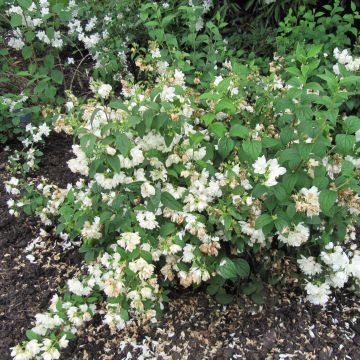
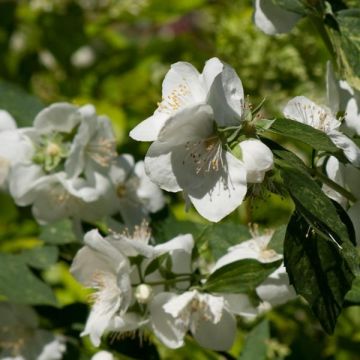



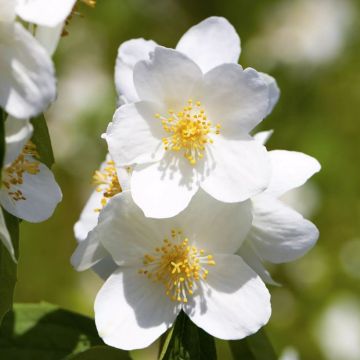

Comments